 The Non-Invasive Vascular Laboratory at Stony Brook University Medical Center — which is fully accredited by the Intersocietal Commission for the Accreditation of Vascular Laboratories (ICAVL) — performs sophisticated non-invasive cerebral, peripheral, and abdominal vascular studies. These tests are called non-invasive, because no dyes, x-rays, or needles are used to perform them. Their purpose is to assist physicians in making a timely clinical diagnosis of venous or arterial circulatory conditions, while assisting them to determine the need for more complex diagnostic or therapeutic procedures. Meeting the high standards set by the ICAVL demonstrates our lab's commitment to excellence and quality assurance in vascular testing.
The Non-Invasive Vascular Laboratory at Stony Brook University Medical Center — which is fully accredited by the Intersocietal Commission for the Accreditation of Vascular Laboratories (ICAVL) — performs sophisticated non-invasive cerebral, peripheral, and abdominal vascular studies. These tests are called non-invasive, because no dyes, x-rays, or needles are used to perform them. Their purpose is to assist physicians in making a timely clinical diagnosis of venous or arterial circulatory conditions, while assisting them to determine the need for more complex diagnostic or therapeutic procedures. Meeting the high standards set by the ICAVL demonstrates our lab's commitment to excellence and quality assurance in vascular testing.
Benefits
Non-invasive vascular evaluations offer a number of advantages. These sophisticated tests are painless and can document the presence, location, and severity of arterial and venous vascular disease. In addition, the non-invasive nature of the exam greatly reduces patient risk and enhances patient comfort when compared to invasive diagnostic procedures. These tests are also cost-effective, an important consideration in today's healthcare environment.
Service-Oriented Approach
The Non-Invasive Vascular Laboratory takes a "service-oriented" approach to physicians and patients. This is exemplified by:
Rapid Report Turn-Around Time
Positive preliminary reports are immediately communicated to the referring physician either by telephone or fax. Final reports interpreted by our distinguished physician panel are mailed to the referring physician's office within 48 to 72 hours of the study. Our physicians are available for consultation regarding a study during hours of operation.
Sensitivity to Patient Needs
Each patient referred to the Non-Invasive Vascular Laboratory is treated as an individual with specific needs. Vascular technologists obtain a complete problem-focused history, thoroughly explain the procedure and help the patient relax by carefully describing the test as it is being performed.
Comprehensive Evaluation
Each comprehensive vascular evaluation includes a complete problem-focused history, performance of the test with hard copy and/or video recording of the data, physician-interpreted results and readily available reports.
State-of-the-Art Technology
The Non-Invasive Vascular Laboratory features the latest technology available in the field. This includes:
Direct Studies
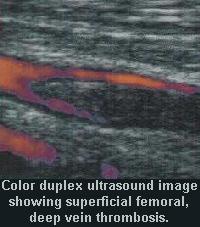 Colorflow duplex ultrasonography is utilized to evaluate the arterial and venous systems. This technology combines three ultrasound modalities:
Colorflow duplex ultrasonography is utilized to evaluate the arterial and venous systems. This technology combines three ultrasound modalities:
1. Two-dimensional B-mode ultrasound imaging in gray scale provides anatomic information about the vessels of interest. The presence or absence of atherosclerotic plaque or thrombus is detected using this modality.
2. Doppler ultrasound provides physiologic information about blood flow in the vessel. Using this modality, a Doppler velocity spectral analysis is obtained, which can determine whether plaque or thrombus is hemodynamically significant and compromising blood flow.
3. Colorflow ultrasound provides the ability to quickly visualize blood flow and demonstrate the degree of vessel obstruction.
Indirect Studies
Indirect studies also play a key role in non-invasive vascular evaluations. These tests include digital plethysmographic analysis for evaluation of perfusion, spectral waveform analysis for characterization of the Doppler velocity signals, and segmental Doppler systolic pressures. The Non-Invasive Vascular Laboratory performs the following procedures:
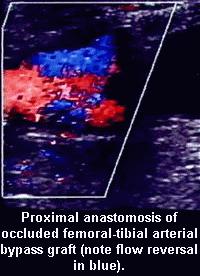
- Arterial Doppler and pulse volume recorder evaluation with or without exercise testing
- Digital arterial studies
- Duplex ultrasonographic evaluation of hemodialysis access devices
- Evaluation of abdominal aortic aneurysm with duplex ultrasonography
- Evaluation of temporal arteritis
- Extracranial cerebrovascular duplex ultrasonography
- Graft imaging to assess patency status after arterial bypass
- Hyperemia evaluations prior to hemodialysis access
- Intracranial cerebrovascular duplex ultrasonography
- Intravascular completion duplex ultrasonography
- Mesenteric arterial duplex ultrasonography
- Renal artery duplex ultrasonography
- Supine and standing lower extremity venous duplex ultrasonography
- Ultrasound-guided thrombin injection of femoral pseudoaneurysm
- Upper and lower extremity arterial duplex ultrasonography
- Upper and lower extremity vein mapping
- Upper extremity venous duplex ultrasonography
Common Indications for Studies
Listed below are clinical conditions that indicate the need for non-invasive vascular studies:
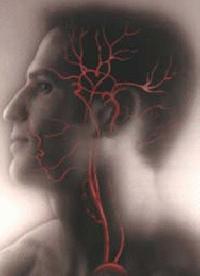 Cerebrovascular
Cerebrovascular
- Amaurosis fugax
- Atypical central nervous system symptoms
- Carotid bruit
- Follow-up of carotid stenosis
- Non-hemispheric cerebral ischemic symptoms
- Post-surgical evaluation for carotid restenosis
- Prior to heart or major surgeries in selected cases
- Question of carotid dissection
- Question of carotid aneurysm
- Stroke
- Subclavian steal
- TIA (transischemic attack)
- Vague symptoms of light-headedness, dizziness or syncope
- Vertebral basilar symptoms
- Vertebral occlusive disease
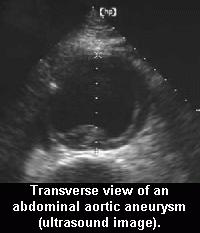 Abdominal Vessels
Abdominal Vessels
- Abdominal aortic aneurysm
- Abdominal bruit
- Aortoiliac occlusive disease
- Follow-up of aortic, renal, mesenteric or iliac stenosis
- Follow-up of renal or iliac angioplasty/stent procedures
- Iliac vein or caval thrombosis
- Ischemic nephropathy
- Mesenteric ischemia
- Post-surgical evaluation of aortic, renal or mesenteric grafts
- Post-surgical evaluation of aortic, renal, mesenteric or iliac stenosis
- Renovascular hypertension
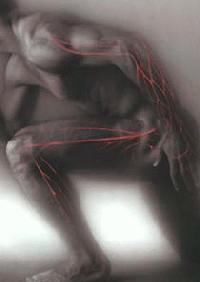 Peripheral Venous
Peripheral Venous
- Chronic venous insufficiency, reflux/valvular incompetence
- Follow-up during and after anti-coagulant therapy
- Observation of high-risk patient groups for development of deep venous thrombosis (e.g., pregnant females, cancer patients)
- Suspected deep venous thrombosis or superficial phlebitis
- Varicose veins
- Vein mapping for coronary or peripheral arterial reconstruction
- Venous evaluation prior to implantation of various access devices (e.g., catheters, lines)
Peripheral Arterial
- Bypass graft follow-up
- Diminished or absent peripheral pulses
- Evaluation of degree of claudication, if present
- Evaluation of medical management
- Leg pain of questionable etiology
- Non-healing foot/toe lesions
- Peripheral aneurysm evaluation
- Rest pain (diabetic neuropathy versus ischemia)
- Trauma to peripheral artery
- Vasospastic disorders
Vascular Laboratory Staff
Director: Nicos Labropoulos, PhD, RVT
Medical Director: Antonios P. Gasparis, MD
Technical Director: Paula Stiegler, RVT
Vascular Technologists:
Lenore Sabella, RDMS, VT
Suguna Arunachalam, RDMS, RDCS, RVT
Carroll Oman
Address
Non-Invasive Vascular Laboratory
Stony Brook University Medical Center
Stony Brook, NY 11794-7560
~ We are located of Level 4 of the hospital ~
Appointments/Information
Please call 631-444-1717.
All appointments for testing require
a written order from a physician.
| Hours Monday through Friday from 8:30 am to 7:00 pm |

